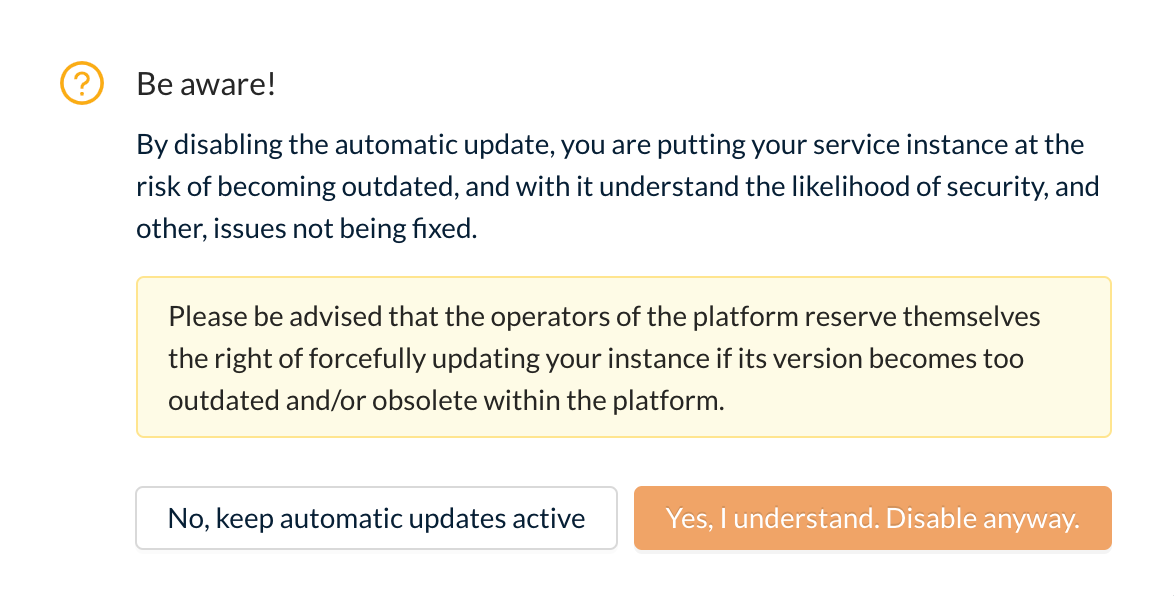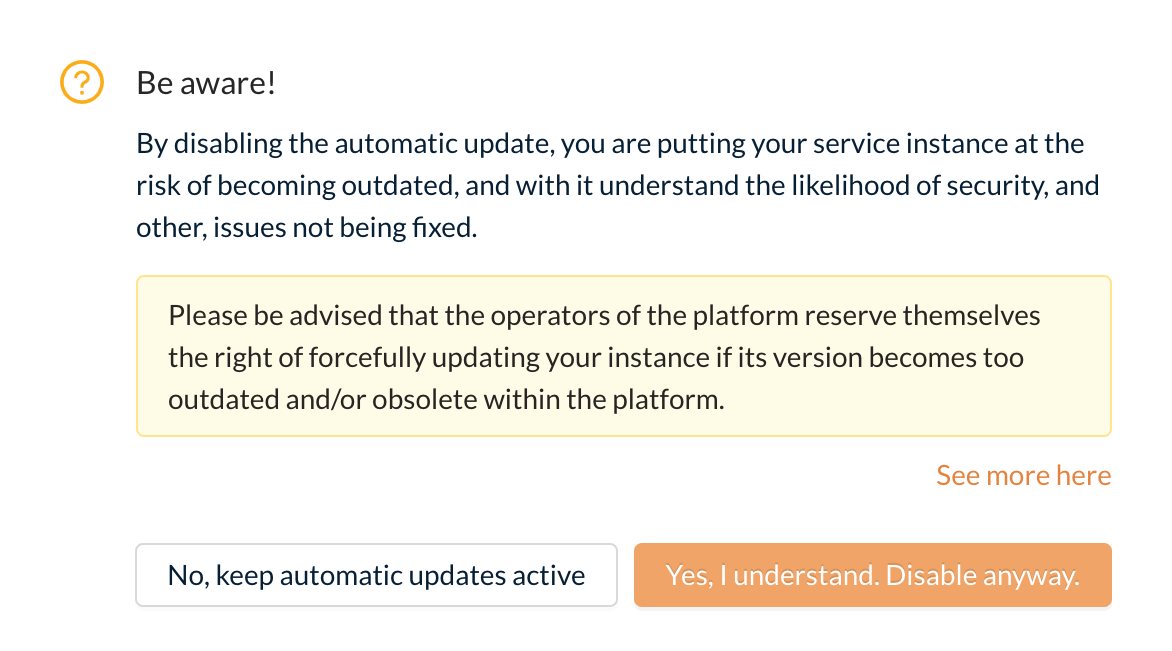Allow Automatic Updates
Allow to Block Automatic Updates
The Platform Operator can allow the Application Developer to block the automatic update by using the
ops/forbid-automatic-update-of-service-instance.yml ops file. This enables the Update tab, from where the
Application Developer to block automatic updates. For more information, see
a9s Service Broker - Block Automatic Updates.
Configure Disable Automatic Update Modal
When the Application Developer clicks on forbid automatic update, a warning modal pops up:
The Platform Operator can configure the content of the confirmation modal that is shown to the end-user. It is possible
to override the default text via the updates.modal property of the dashboard-app job.
The updates.modal property must be a hash with the following optional keys:
| Name | Type | Description |
|---|---|---|
title | string | Title of the modal displayed to the end-user when forbidding automatic update of their Service Instance. |
text | string | Text of the modal displayed to the end-user when forbidding automatic update of their Service Instance. |
ok_button | string | Text displayed within the confirmation button of the modal that is shown to the end-user when forbidding the automatic update of a Service Instance. |
cancel_button | string | Text displayed within the cancel button of the modal that is shown to the end-user when forbidding automatic update of a Service Instance. |
link_text | string | Text displayed to the end-user for the link defined in link_url. If this property is not configured, the link_url will be displayed instead. |
link_url | string | Link to an external resource in the modal. |
The URL specified via the link_url must start with http or https.
If a property is not specified, the default value is used:
Example Configuration
properties:
updates:
modal:
title: <title>
text: <content of the confirmation panel>
ok_button: <content of the confirmation button>
cancel_button: <content of the cancelation button>
link_text: <optional-link-text>
link_url: <optional-url-starting-with-http-or-https>

